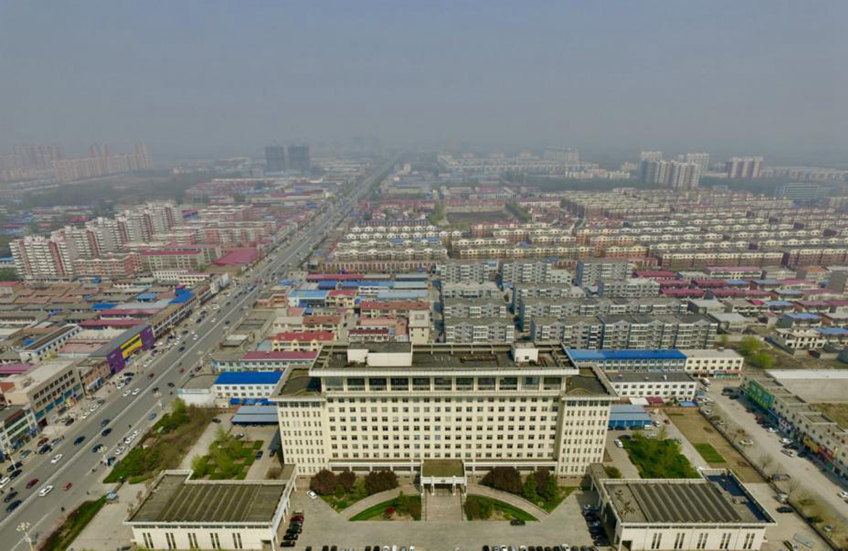By Tom McGregor, CCTV.com Panview Opinion page commentator and editor
China's capital city - Beijing- struggles with severe over-crowding, pollution and soaring apartment home prices. The city's population stands at 21 million, which increases daily.
To resolve over congestion, China's Central Government has launched a new project, known as Jing-Jin-Ji (Beijing-Tianjin-Hebei Province), developing the region into a mega-metropolis. Such efforts will boost infrastructure to provide more living space for residents in the region.
Jing-Jin-Ji would form a Chinese 'Capital City' triangle. Beijing will stand at the top; connect to Tianjin, port city and 72-km. southeast, while a new zone - Xiongan New Area will be built 100-km. Southwest of Beijing.
The Xiongan New Area, located in northern Hebei Province, will cover 100sq./km. and later expand to 200sq./km. Planners hope 4.5 million people in Beijing will move there within 10 years. The zone will be designated in the rural counties: Xiongxian, Rongchen and Anxin.

Looking 1,000 years ahead
Beijing officials hold high hopes for Xiongan New Area aspiring to set a trail for bold reforms and economic expansion for the next millenium in the country.
He Lifeng, Chairman of the National Development & Reform Commission, hailed Jing-Jin-Ji as the project to "forge a new age of innovation-driven growth" for the next 1,000 years.
Reforms will be tested as pilot-projects in Xiongan New Area and if successful will get introduced nationwide.
"In the Jing-Jin-Ji areas, we have a capital, a key municipality and a provincial government," Tian Yun, director of the research center at China Society of Macroeconomics, told the Global Times.
Tian added, "The area reflects the most diversified political landscape in China with all sorts of administrative barriers and vested interests."
Despite it proximity to Beijing, the Xiongan area currently is one of the more impoverished farming communities in the country. Developers can transform the region.
Building an administrative capital
China's strategy is to transfer non-capital related facilities to Xiongan. Accordingly, we can expect to witness some of the top schools in the country opening up new campuses in the satellite city.
Xiongan will also become home to more hi-tech companies, Research and Development (R&D) centers, hospitals and administrative centers for government agencies.
"Hebei is the least developed area in the Beijing-Tianjin-Hebei region," said Sheng Guangyao, research fellow at Urban and Environmental Studies of the Chinese Academy of Social Sciences (CASS). "The new strategy is aimed at making use of Hebei's geographical advantage to develop the province."
To prevent real estate speculation, the Chinese government has halted property sales in the Xiongan zone to allow administrative agencies to purchase land and keep costs low when building key infrastructure, such as roads, bridges, subway lines, railways and so much more.
No easy adjustment
The Chinese government cannot open the Xiongan New Area overnight. There's so little infrastructure available at the moment. It will take 5-10 years alone to build up the site and that’s without unexpected delays.
Beijing families must be enticed to move there. They have already purchased homes in the capital city expecting to live there for decades to come, but families will have to uproot and transfer to a city 100 miles away.
China will try to replicate the Shenzhen Special Economic Zone and Shanghai Pudong New Area models. Xu Qin, party secretary and mayor of Shenzhen, was appointed as Hebei provincial deputy party secretary.
Xu was assigned to take charge of the Xiongan New Area and he's had a successful career in government as a champion of reforms and developing special economic zones.
The size of the zone will be three times the size of New York City.
Creating a solution of necessity
China has a huge population and it would be foolish to centralize government and economic activities in Beijing, Shanghai and Shenzhen.
To support a sustainable development mode for strong economic growth, more cities should get built and spread out nationwide. Beijing can expand under the Jing-Jin-Ji, while the Xiongan New Area can fly a new wing for the capital city.
 Tom McGregor, CCTV.com Panview Opinion page commentator and editor
Tom McGregor, CCTV.com Panview Opinion page commentator and editor
(The opinions expressed here do not necessarily reflect the opinions of Panview or CCTV.com)

Panview offers a new window of understanding the world as well as China through the views, opinions, and analysis of experts. We also welcome outside submissions, so feel free to send in your own editorials to "globalopinion@vip.cntv.cn" for consideration.















